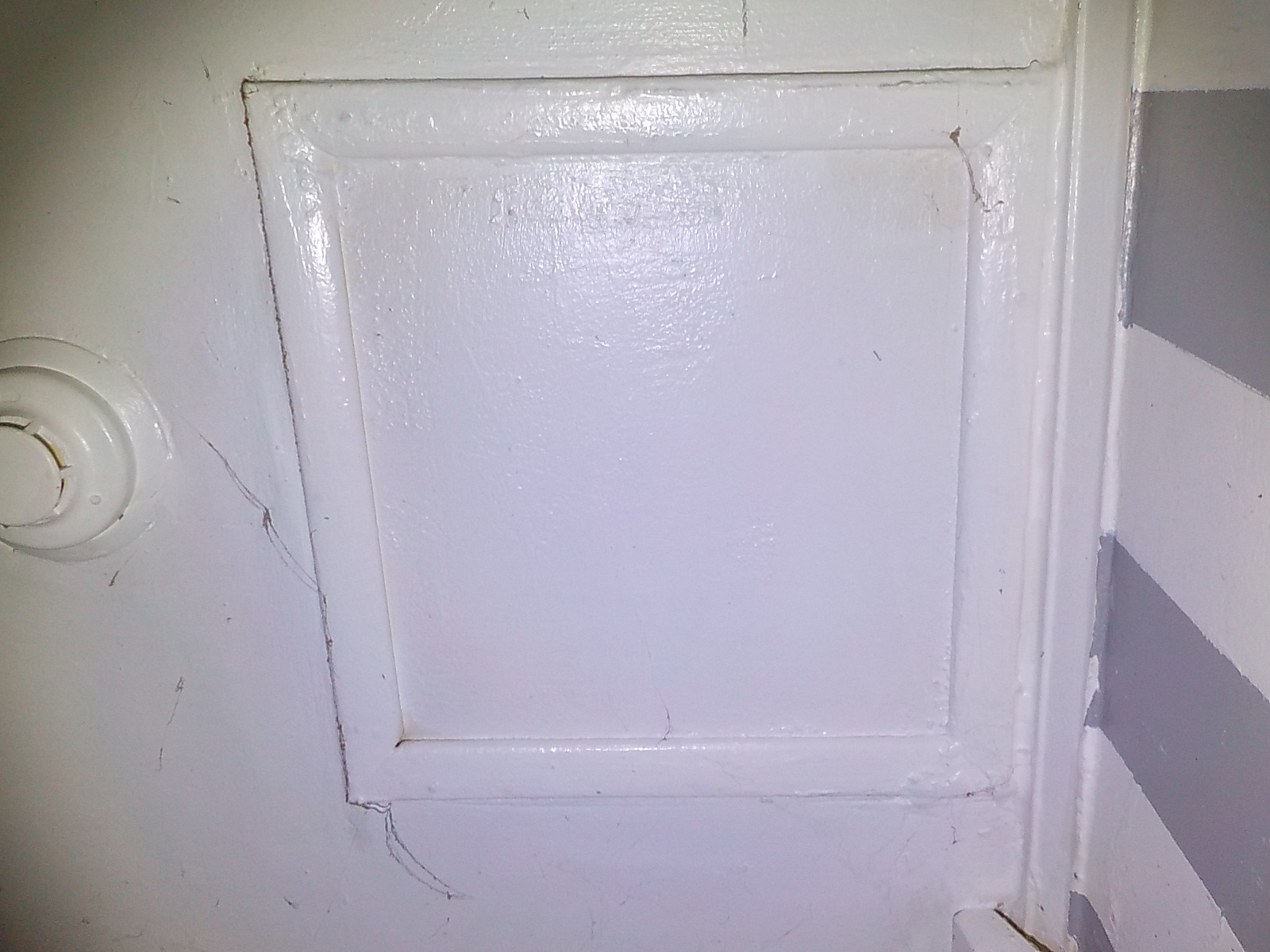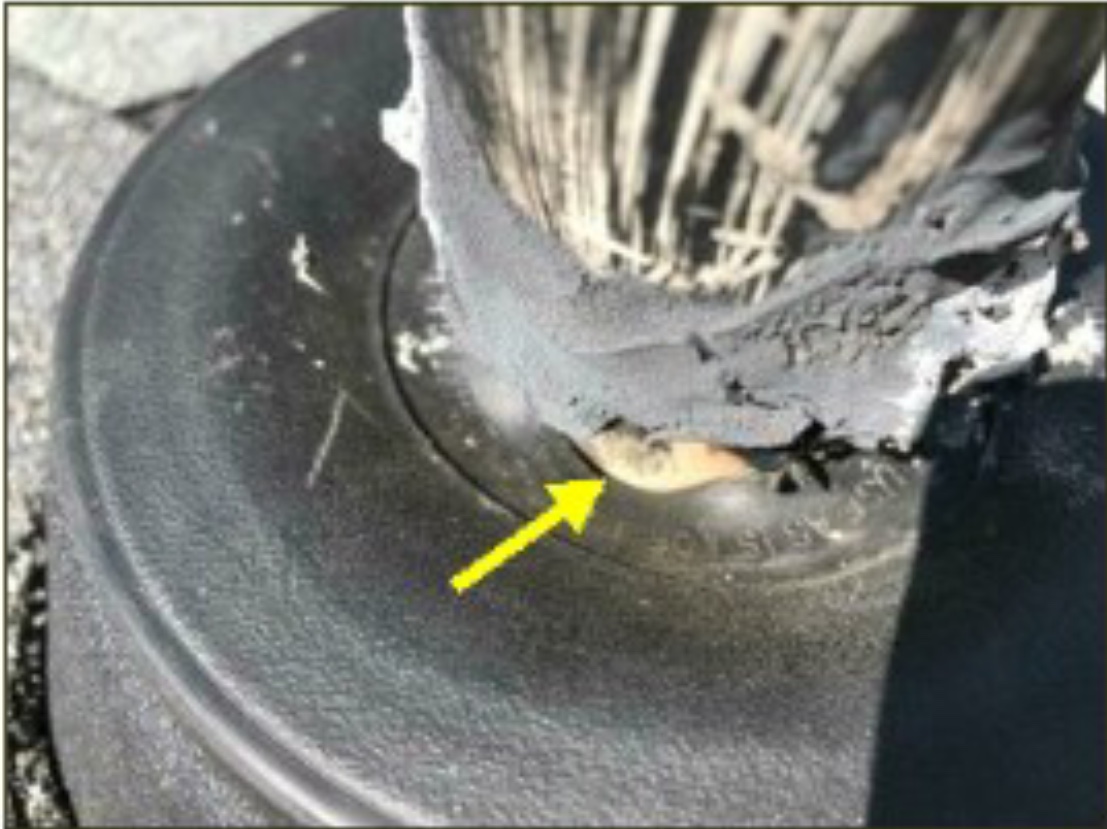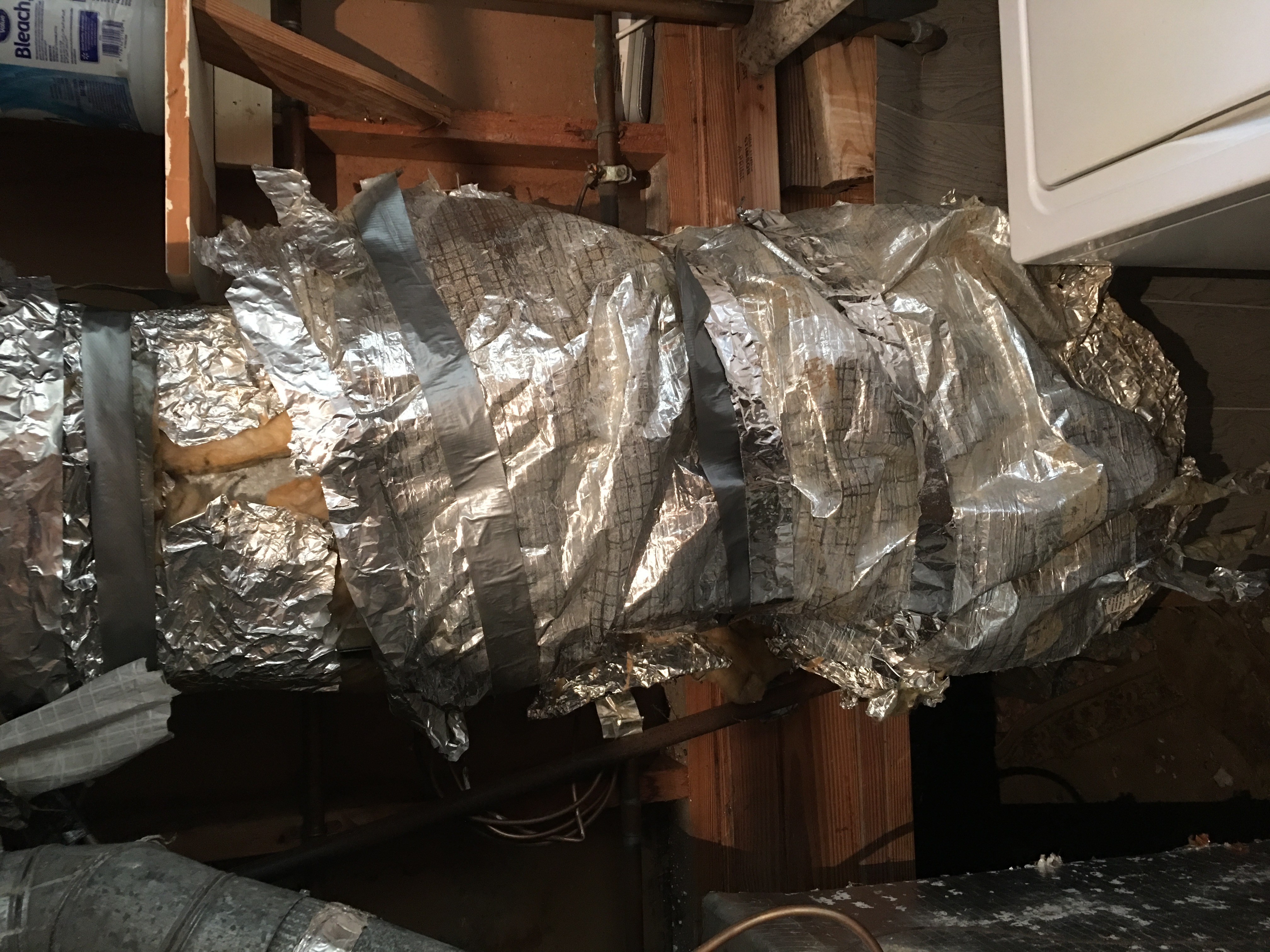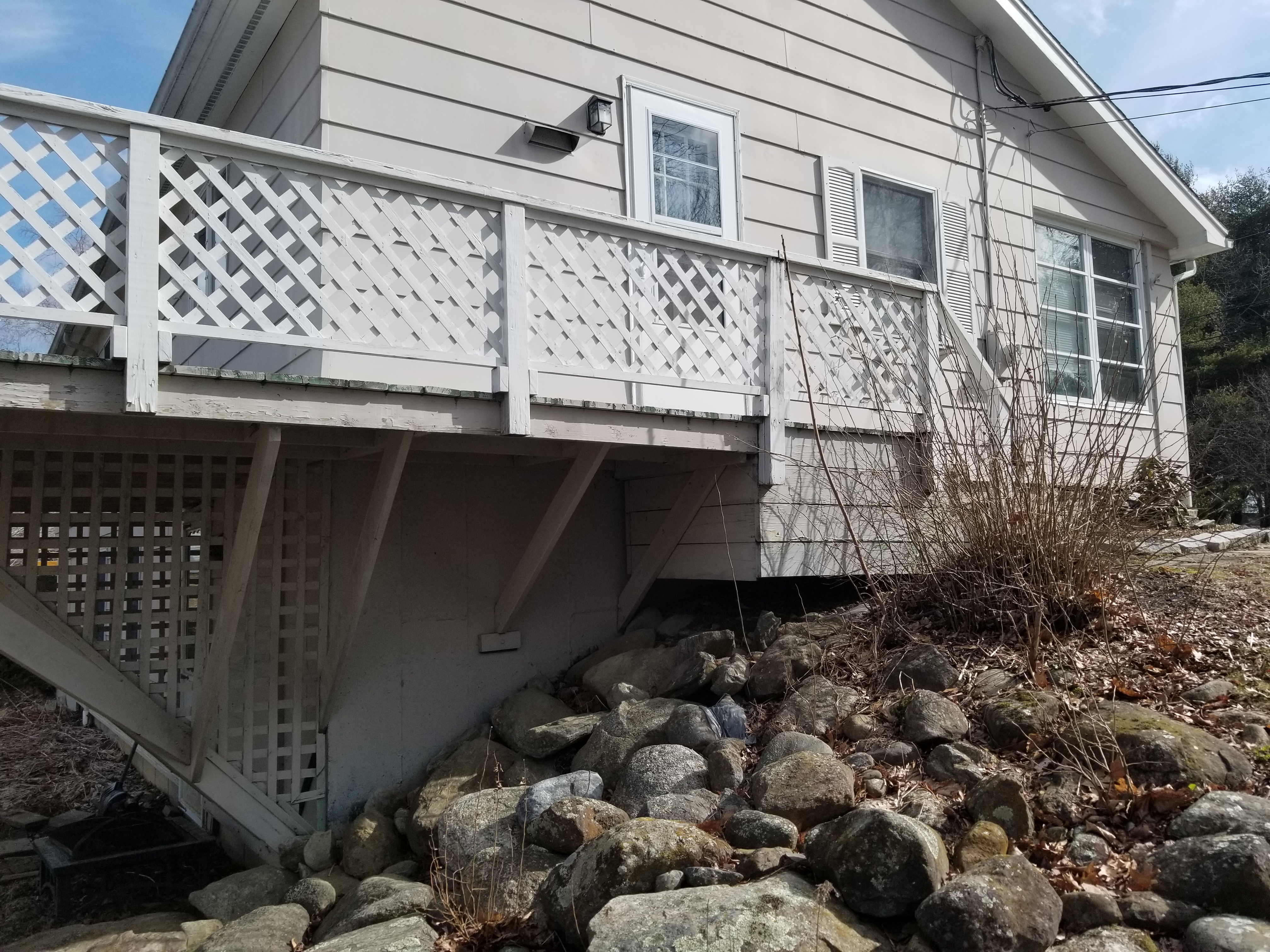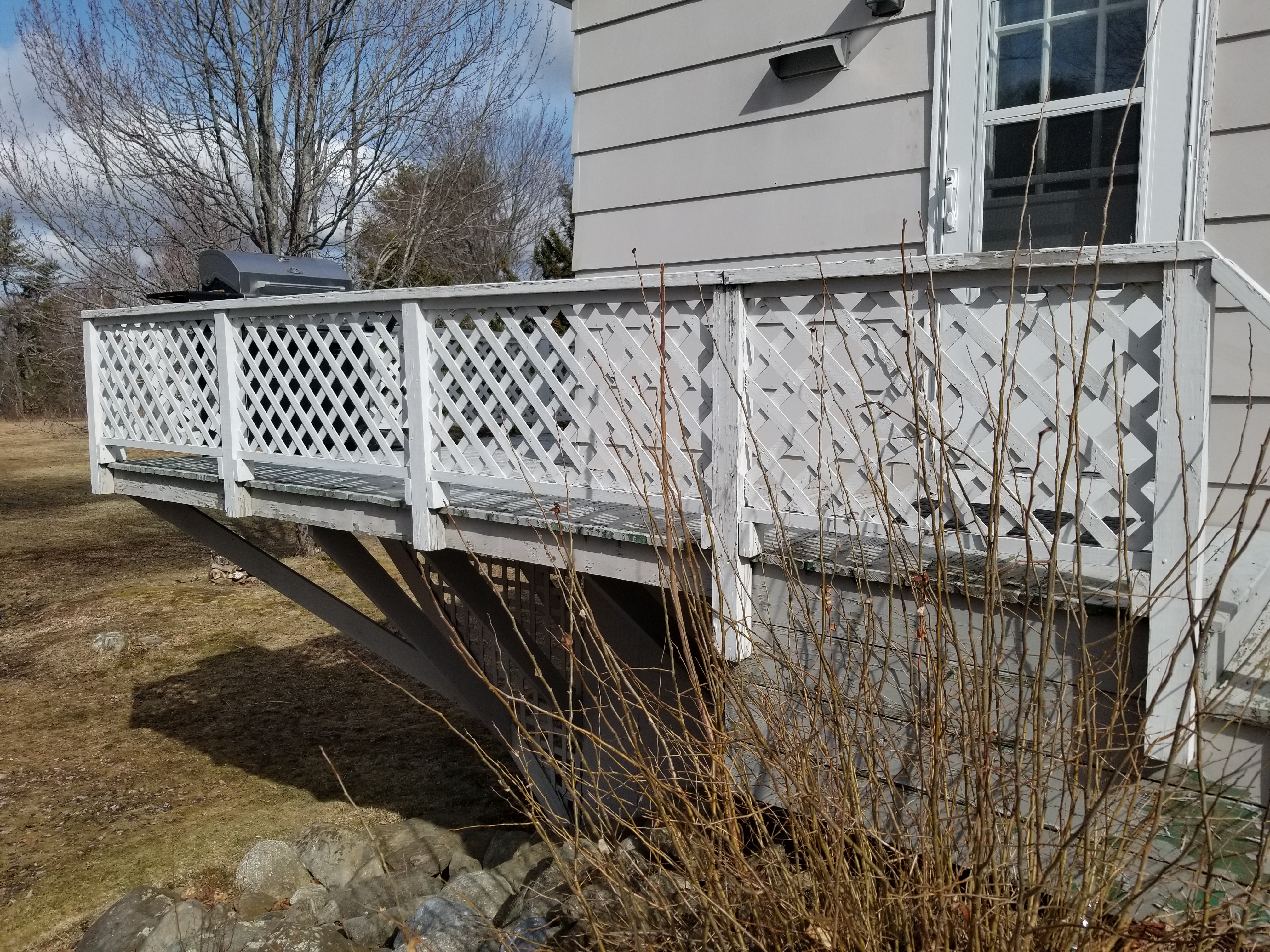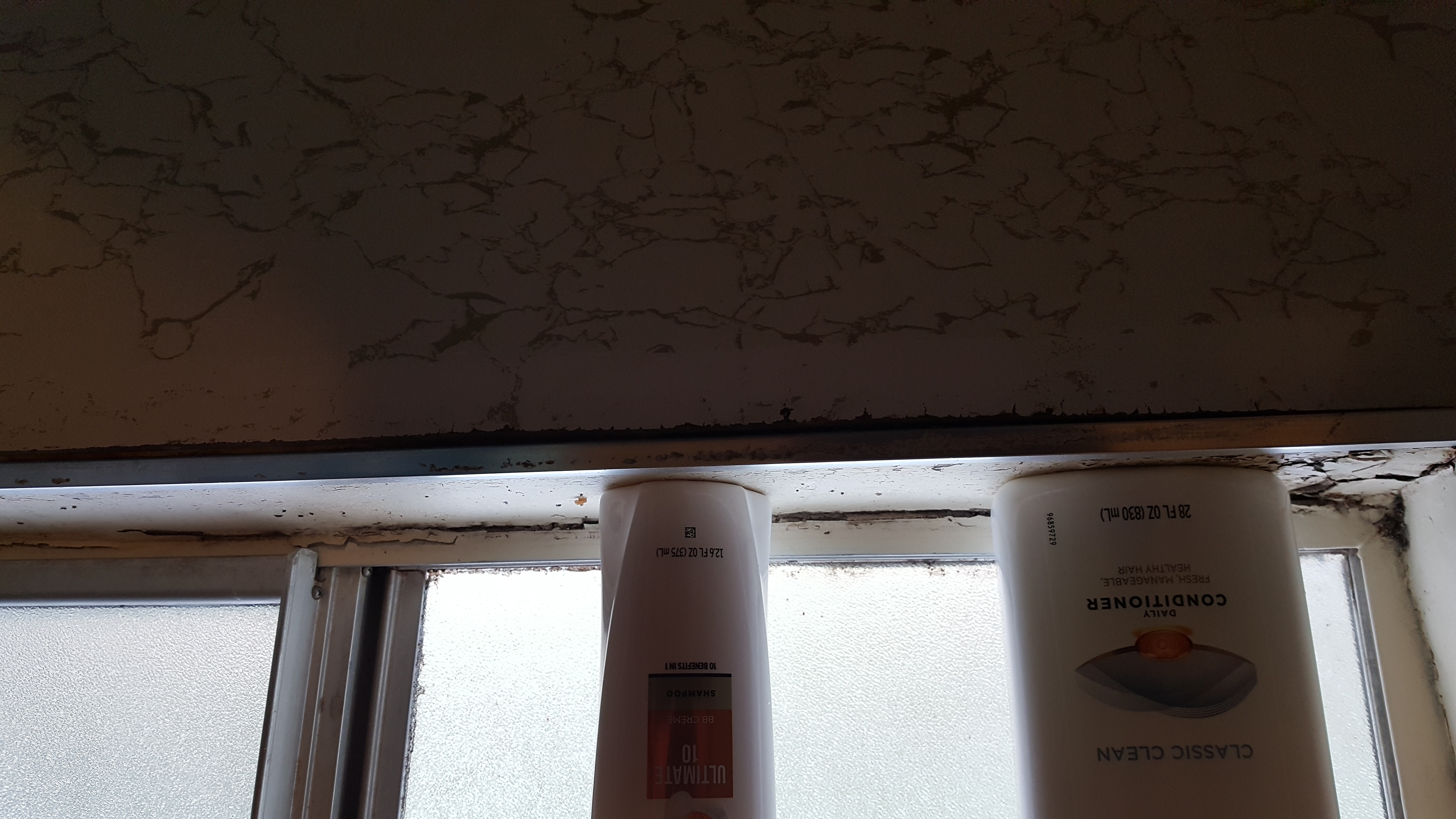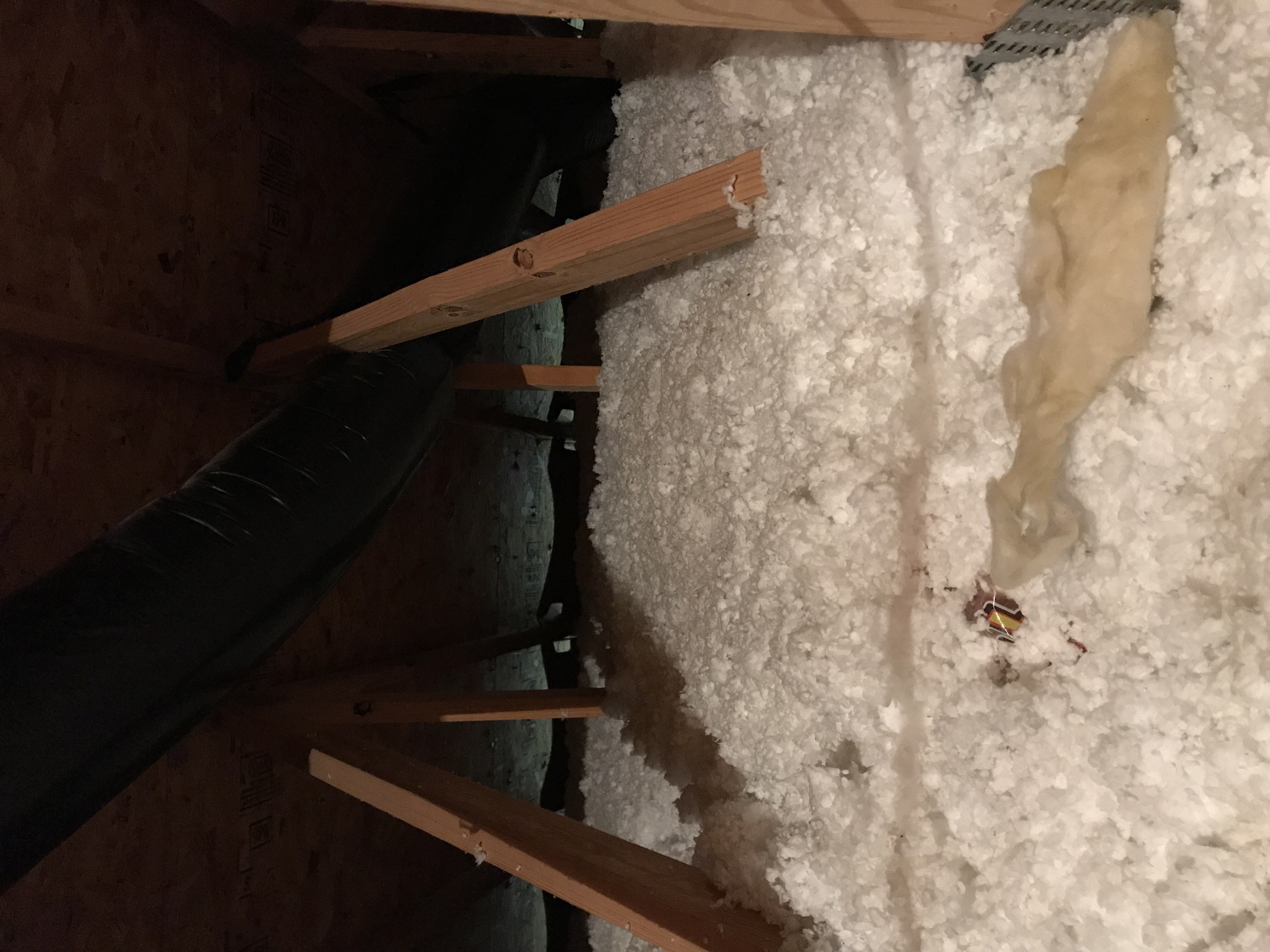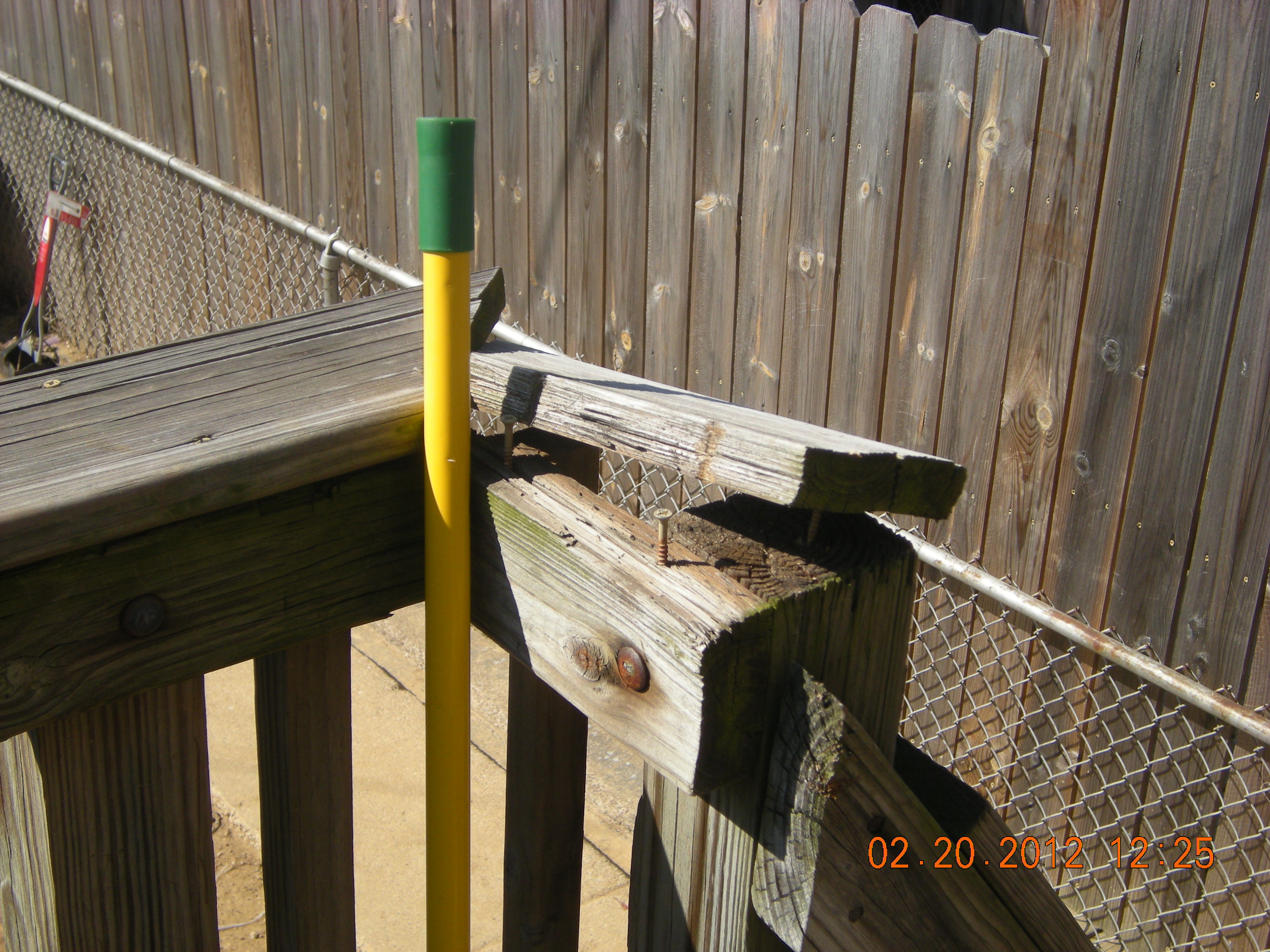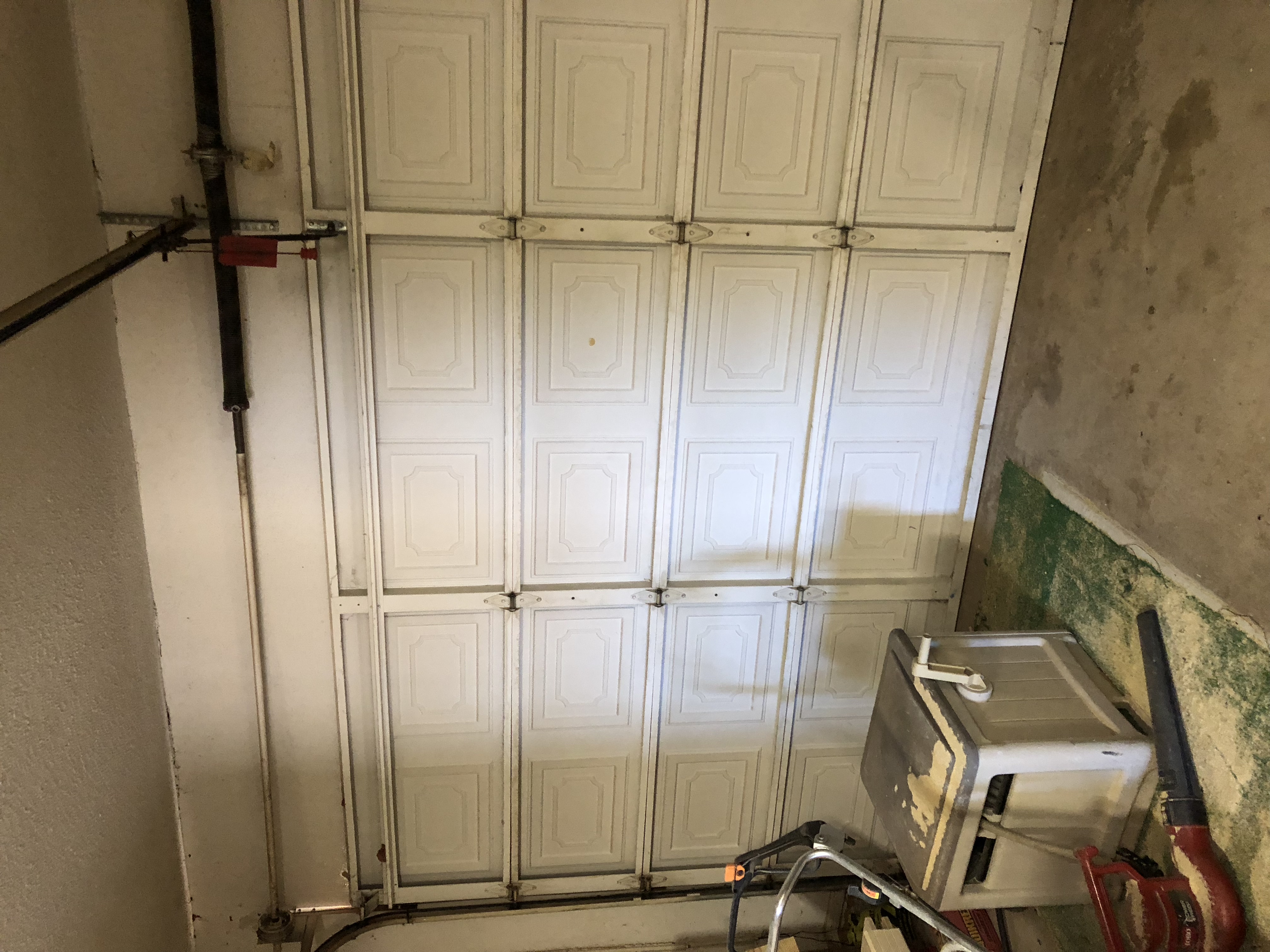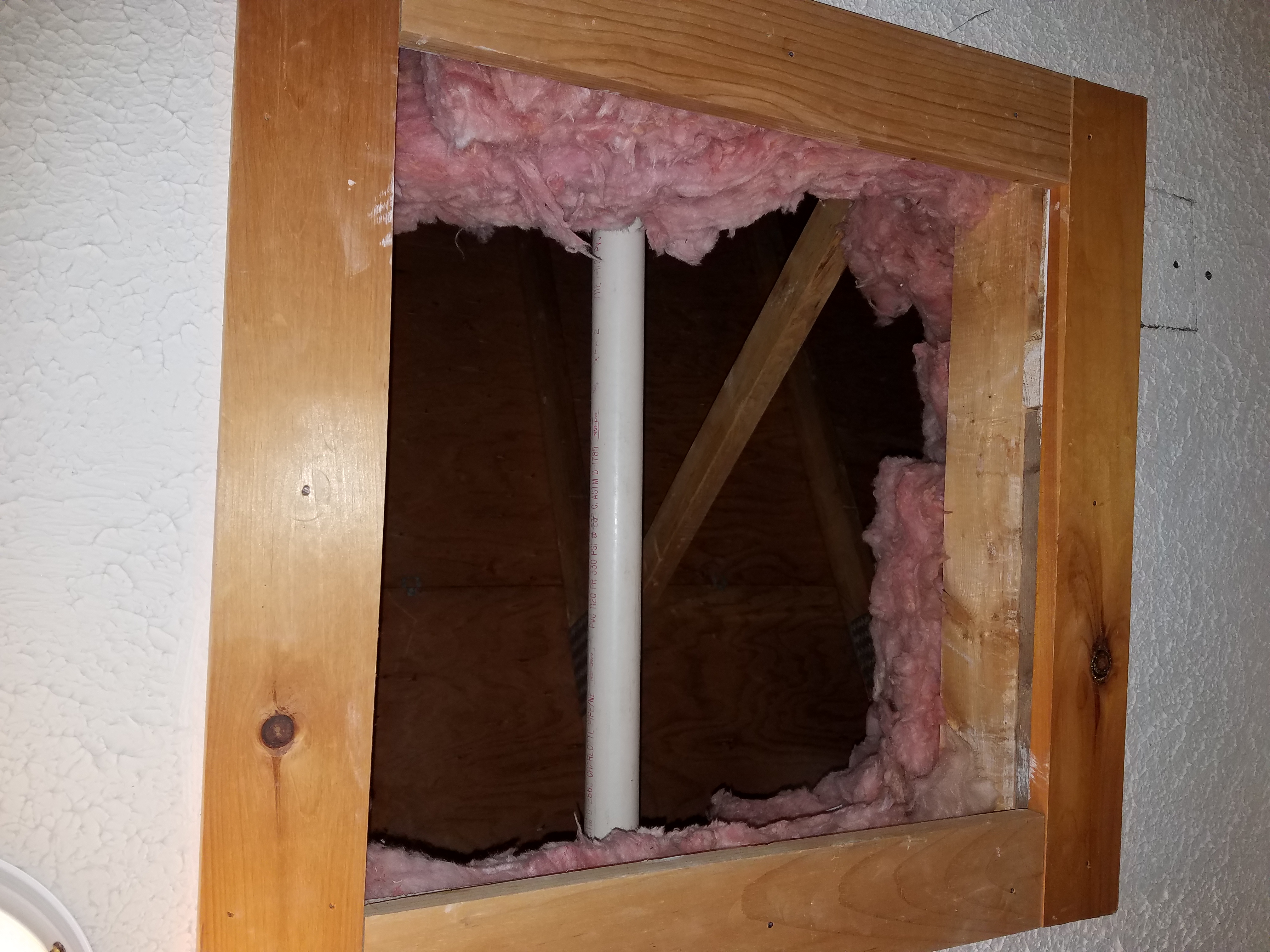This is an attic access that was sealed shut. Without being able to access an attic space, one can not determine the condition of it. We want to see the insulation, rafters, ceiling joists, sheathing etc. and the condition of those components. We would also like to see if there are any water stains on the sheathing or if there are rodent droppings. Definitely recommend verifying condition.
This a picture of an attic access that has been sealed shut. Without accessing an attic we can not determine the condition of the insulation, rafters, sealing joists, sheathing or if there are any rodent droppings. We would recommend adding an access an verifying condition of all components.
This is a picture of an attic space with blown in insulation. There is also air vent baffles going from the soffit vents and stapled to the underside of the roof deck. This facilitates air flow from the soffits up the ceiling to the ridge vent.
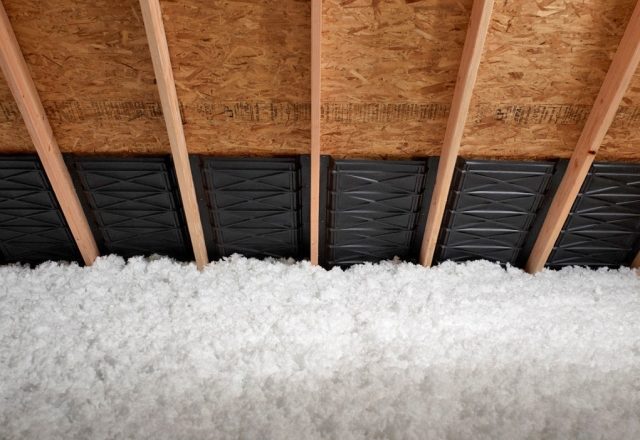
I read an article on insulation R value. It states that the function of insulation is the provide resistance to the flow of heat. Energy loss and heating an cooling account for 50-70% of energy costs in this country. A higher R value equates to a higher resistance to heat flow and greater effectiveness of insulating.
When I inspected a roof(pitched or slopping roof), I start from the bottom(ground)and walked around the home inspecting the gutters first and the spouts. Looking for any damaged or loose gutters or spouts. Then climbed to the roof look closely to the shingles for any missing or not even ones. I inspected the plumbing vent flashings and found that they where vulnerable. When the flashings where installed they were either stretched or trimmed to fit the vent pipes. These should be in stalled in a manner that prevents moisture intrusion. I recommend that they should be repaired by a licensed roofer.
When I inspected a roof(pitched or slopping roof), I start from the bottom(ground)and walked around the home inspecting the gutters first and the spouts. Looking for any damaged or loose gutters or spouts. Then climbed to the roof look closely to the shingles for any missing or not even ones. I inspected the plumbing vent flashings and found that they where vulnerable. When the flashings where installed they were either stretched or trimmed to fit the vent pipes. These should be in stalled in a manner that prevents moisture intrusion. I recommend that they should be repaired by a licensed roofer.
I recently inspected this deck. The handrails are not to code. They rise only 30 inches above the deck and the deck is over three feet above grade. The lattice work should not be used as a child may be able to climb it causing a potential safety hazard. They should have used vertical ballisters no more than 4 inches apart.
Insulation on the return duct in the Laundry room is loose and falling off. recommend getting this repaired by a Licensed Heat and Air technician. This will cause energy loss and higher heating and cooling cost if not repaired. Duct tape is not a recommended repair and this will get brittle in time and fall off.
Adjustable Steel Columns are normally used for support in basements. Here in Georgia I see them in older homes that have been remodeled and the floors leveled. I have seen these put on dirt floors with no concrete footing and placed on top of several concrete blocks with no attachment to a solid surface. Common sense says this is not the way to install them. I did not know that the thread should not exceed 3 inches.
I recently inspected this deck. The handrails are not to code. The handrails should be at least 36 inches above the deck. Lattice work should not have been used either. A child could climb it causing a potential safety hazard. Vertical ballisters should have been used no more than 4 inches apart.
I recently inspected this deck. The handrails are not to code. The handrails should be at least 36 inches above the deck. Lattice work should not have been used either. A child could climb it causing a potential safety hazard. Vertical ballisters should have been used no more than 4 inches apart.
Masonite tub enclosure shows signs of separation from wall at window sill. This could potentially allow water to penetrate into wall and cause damage. Sill area also shows signs of deterioration and could potentially allow moisture to enter the framing structure. Suggest further evaluation by a qualified person for repair.
Anti tip devices, US consumer product safety reported between 1980 and 2006 there were 143 incidents in which 33 resulted in death, mostly children causing ovens to tip over from weight being placed on the open door. In 1991 (ANSI) American National Standards Institute and (UL) Under Writers Laboratory created standards that require an oven to remain standing with 250 pounds of weight on there doors. As a general rule it is best to visually and physically inspect an oven to determine if it has an anti tipping device installed.
AFCI tester indicators are portable devices designed to test AFCI functionality. They create waveform patterns similar to those produced by actual arc faults, thereby causing working AFCIs to trip. AFCI indicators are considerably larger and more expensive than GFCI indicators and are of questionable effectiveness. For these reasons, they are not used as widely as GFCI indicators
This picture shows an unfinished attic with loose fill insulation. There is a barrier place at the edge of the soffits to keep the insulation from intruding on the soffits and restricting air movement through the attic which could lead to an array of problems.
Rear deck safety hand railing pressure-treated pine cap board is damaged and lifting off of the top stringer. The screws are now exposed causing a cut hazard. The remaining portion of the splintered cap board is loose and may also be a puncture or cut hazard. This damaged section of cap board should be properly replaced.
I viewed the picture of deck ledger board fastener placement. I did not realize there was a minimum distance the fastener had to be from the ledger board edge. This image also points out how the bolts or lag screws used to attach the ledger board to the structure must be staggered. If the bolts/lag screws are installed in a straight line along the board, the ledger board is weakened by creating a possible split point.
This garage door has a properly located and operable manual release. Door operation runs smoothly. This house was built in 1994 which should have a reverse feature with photo-electric eyes but does don’t have one. There is also a lack of proper warning labels on the door itself. I would recommend installing a safety reverse feature and warning labels installed.
In “Three Photos Every Home Inspector Should Include at the End of the Report” I learned an important lesson in protecting myself from being blamed for water related issues. It is best to take three pictures of the water meter at the end of the inspection and include it in the report to show that you did not leave the property with any water running.
This is a picture of an attic access opening. As you can see there is an obstruction in the opening. The obstruction is drainage vent for the kitchen sink. The opening itself is inadequate size. Opening should be 22"x30" this one is only 20"x20". Even less when take in account the pipe going across the middle.
